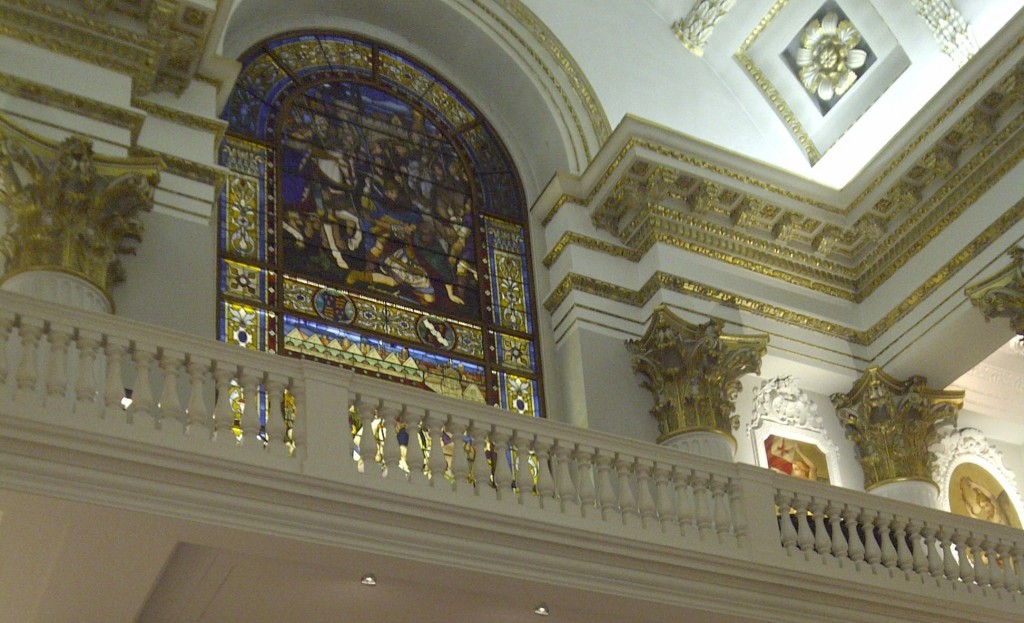The idea for an association of Organists was conceived in November 1863 when the organist of St Michael’s Cornhill, Richard Limpus, convened a meeting of his fellow organists at Mullen’s Hotel Ironmonger Lane.
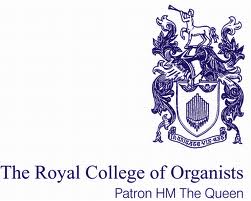 This led to further meetings in 1864 and so it was that the ‘College of Organists’ began life holding its first open meeting in the Freemason’s Hall on July 5th. Some 30 years later on November 23rd 1893 Queen Victoria granted the Royal Charter at a Privy Council meeting in Windsor Castle.
This led to further meetings in 1864 and so it was that the ‘College of Organists’ began life holding its first open meeting in the Freemason’s Hall on July 5th. Some 30 years later on November 23rd 1893 Queen Victoria granted the Royal Charter at a Privy Council meeting in Windsor Castle.
So, from 1893 it has been The Royal College of Organists. There are other musical establishments that have the ‘Royal’ handle. The Royal Academy of Music and The Royal Philharmonic Orchestra come quickly to mind. However I can not think of any single instrument that has its own ‘Royal’ association or college. I wonder why that is? Could it be that the physical energy needed to play the organ was reflected in similar energy to raise the profile of the skill, in a way not (yet?) achieved by other instrumentalists?
Whatever the reason, it is a remarkable credit to the profession that it sought and achieved Royal recognition all those years ago and it is only right that the 150th anniversary of the college should be appropriately marked over the coming year.
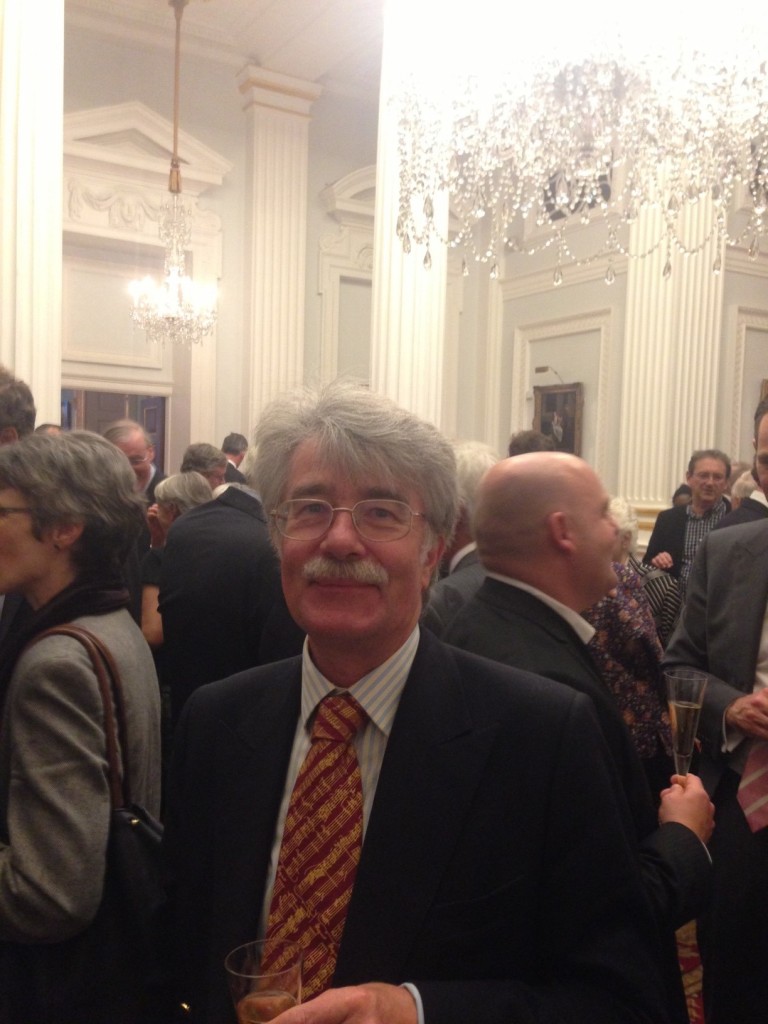 I was greatly honoured to be amongst the 250 or so guests at the Mansion House in September 2013 to start the celebration year rolling. The Mansion House, official residence of the Lord Mayor, is just that, a palace to rival any state building. We were ushered into a grand reception lobby, officially The Salon for a champagne reception prior to a short concert programme. We mingled under a stunning row of crystal chandeliers made in 1875 by Osler.
I was greatly honoured to be amongst the 250 or so guests at the Mansion House in September 2013 to start the celebration year rolling. The Mansion House, official residence of the Lord Mayor, is just that, a palace to rival any state building. We were ushered into a grand reception lobby, officially The Salon for a champagne reception prior to a short concert programme. We mingled under a stunning row of crystal chandeliers made in 1875 by Osler.
I recognised a number of well know performers, James O’Donnel from the Abbey, Paul Hale from Southwell Minster and two of my old teachers, RCO President Catherine Ennis and James Parsons late of Oundle. Probably the largest gathering of organists ever to have taken place in London.
Just before 7.00pm we were directed into the Egyptian Hall This is a huge tall room, seating at least 300 and oddly there was nothing remotely Egyptian to the style. It should be known as the Roman Hall as it is based on designs by the Roman architect Vitruvius and there is nothing Egyptian about the decoration. The marble statues date from 1854-64 and the stained glass from 1868. (Pictures below of concert hall)
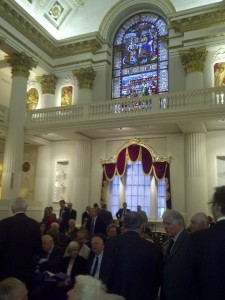
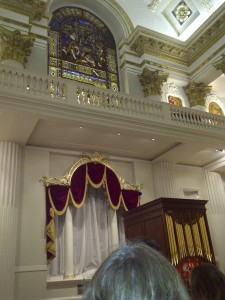
What ever the name, a marvellous concert venue with extraordinary space and impact. Situated at one end was the lovely, but looking somewhat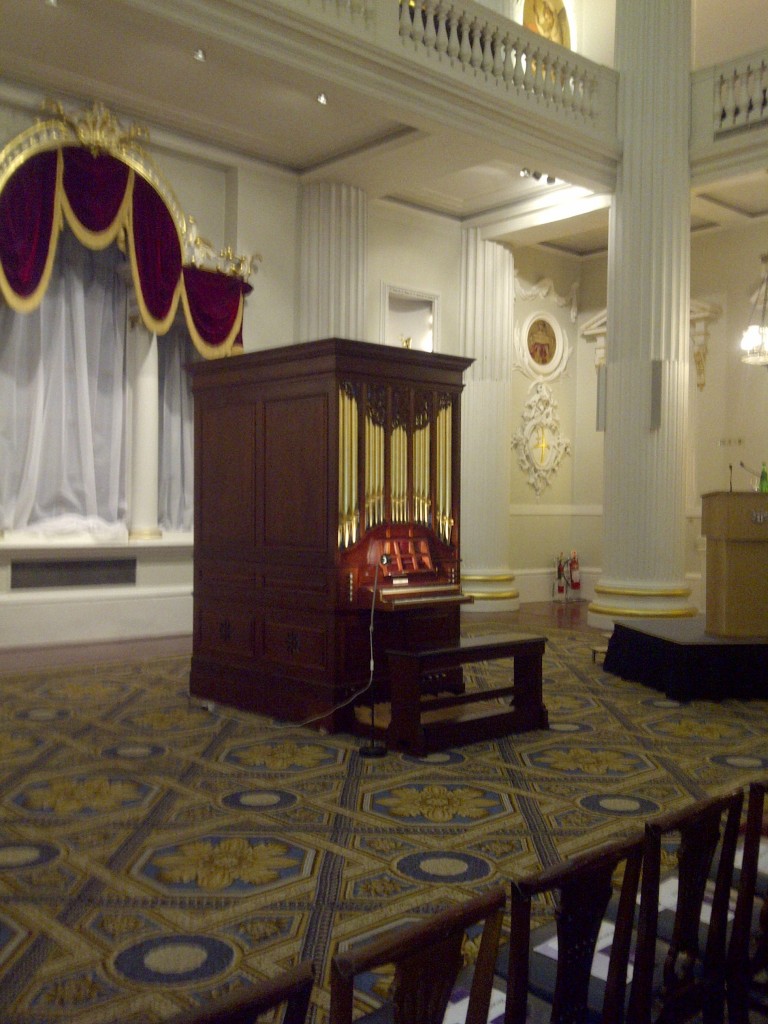 tiny in this vast space, beautiful Mander organ (see pictured right). A gift from the Lord Mayor and the Corporation of London to HM The Queen on the occasion of her Diamond Jubilee. Temporarily set in the Mansion House, it will later move to the Lady Chapel at Westminster Abbey to replace a Snetzler organ currently there.
tiny in this vast space, beautiful Mander organ (see pictured right). A gift from the Lord Mayor and the Corporation of London to HM The Queen on the occasion of her Diamond Jubilee. Temporarily set in the Mansion House, it will later move to the Lady Chapel at Westminster Abbey to replace a Snetzler organ currently there.
Built in similar style to classic English chamber organs of the Georgian period this instrument is a masterpiece of craftsmanship in both execution of the case and the speaking instrument. There is beautiful detail to the key cheeks, lever style toe pistons and a straight flat pedalboard. The organ is mounted on a steel frame so it can moved a little like a hospital trolley, as long of course as the doors are wide enough!
The specification is typical for the instruments size and style:-
Manual I Manual II Pedal
Open Diapason 8 Gedackt 8 Bourdon 16
Stopped Diapason 8 Chimney Flute 4 Man I to Ped
Principal 4 Recorder 2 Man II to Ped
Fifteenth 2 Sesquialtera II
Mixture II Trumpet 8
Man II to Man I
The evening got off to a very sincere welcome from the Lord Mayor and introduction from Catherine Ennis.
I had been wondering since invited who would be asked to play the instrument to such an intimidating gathering of educated ears. Which of our many renowned recitalists would be chosen for the honour or ordeal, depending upon your point of view?
The solution was inspired with the work falling upon four very young students so amply demonstrating the work of the RCO and giving us all hope that the next generation were well on their way to keep the noble art of organ playing well alive.
First up was Stephen Hargreaves who gave a delightful performance of Handel’s organ concerto in F major. Music written for just the style and size of instrument Mander has built. I had been waiting with interest to hear the sound, anxious to hear if such a small organ could take on the great carpeted space in which it sat.
The sound was large, clear and absolutely delightful as was Stephen’s playing. No sign of nerves at all. I felt rather more sympathy for Simon Williams who was page turner for the evening. A job I often do and for which there is no excuse for any mistake that distracts the performer.
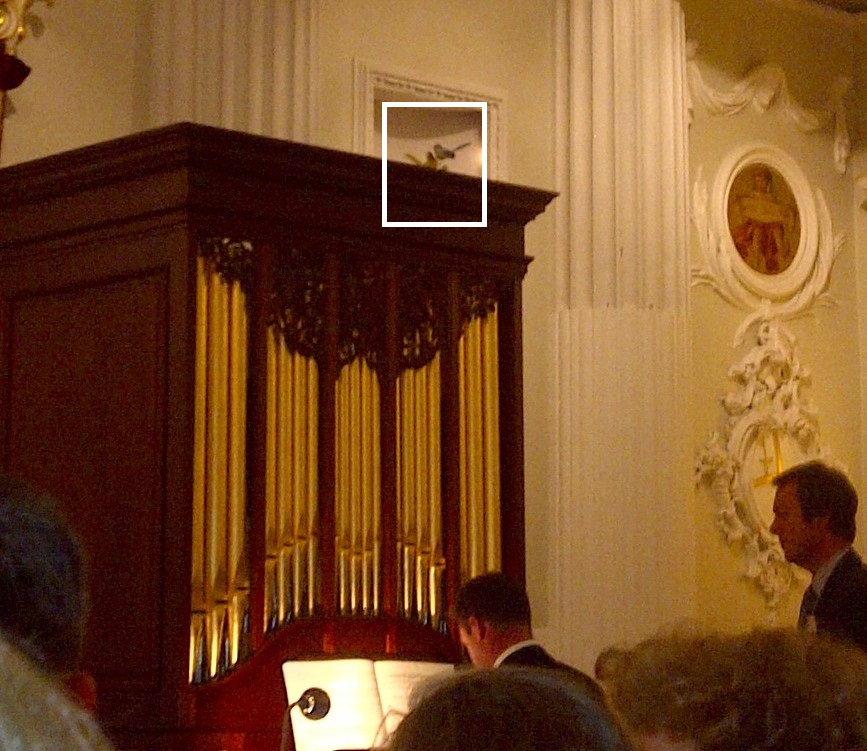 Stephen demonstrated a very unusual stop on the organ often referred to as a Nightingale stop which mimics the sound of bird song and in this particular instrument revolving birds appear from the top of the organ case. If you look closely you can just see them in the picture directly above Stephens head at the top of the case, marked with the white square.
Stephen demonstrated a very unusual stop on the organ often referred to as a Nightingale stop which mimics the sound of bird song and in this particular instrument revolving birds appear from the top of the organ case. If you look closely you can just see them in the picture directly above Stephens head at the top of the case, marked with the white square.
Next to perform was 12 year old Elliot Neal who started playing at the age of 8, his legs can surely only then just have reached the pedals. He has passed Grades 1 to 3 all with distinction and is a music scholar at Westminster Underwood School. He gave us a Zachau prelude ‘Von Himmel hoch, da komm ich hier’.
Next we heard the very moving Ciacona in E minor by Buxtehude played by 16 year old Henry Websdale who was recently organ scholar at Bradford Cathedral. He already has many recital engagements. The Ciacona builds from a gentle theme to a triumphant conclusion which Elliot lead us to in seamless progression.
Finally we ended with the master J S Bach’s D Major fugue BWV 532, a piece demanding great accomplishment especially where there is little acoustic to help join the sections. This was played by Jemima Stephenson formerly organ scholar at Queen’s College Cambridge and only recently appointed to the assistants post at St Mary’s Cornhill. We heard a lively performance of this dance like fugue with the trumpet being used for the solo pedal line.
All too soon the evening was over and it was time to spill back out onto the dark London streets and find our way home. A very lucky group of RCO guests were given a very special evening to remember and be part of a quite unique start to a year of celebration of a very special institution of deserved reputation.
I have had a passion for church organs since the tender age of 12. I own and run Viscount Organs with a close attention to the detail that musicians appreciate; and a clear understanding of the benefits of digital technology and keeping to the traditional and emotional elements of organ playing.
